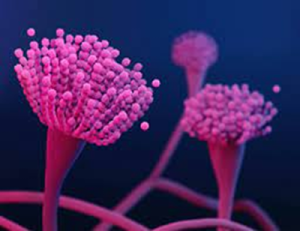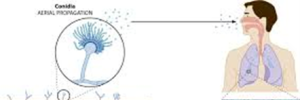Click on the links below to answer your Frequently Asked Questions:
What is Aspergillus?
Aspergillus spp. is a common fungi that can be found in the environment. Aspergillus fungi can often be found around plants and trees, including rotting leaves and compost; but also in air conditioning and heating systems, insulation material or dust.
It causes a disease called aspergillosis.
The Incubation period varies widely from days to months.

How does it spread?
Aspergillosis is not infectious and cannot be transmitted from person to person but occurs if an individual inhales tiny particles of the aspergillus fungi that hang in the air when the environment becomes disturbed.
Spore levels are increased during hospital building or renovation activities, with severely immunocompromised patients more at risk of developing aspergillosis.

What are the symptoms of Aspergillosis?
Symptoms of aspergillosis vary, depending on the type and the part of the body that’s affected.
Invasive pulmonary aspergillosis (IPA) is the most serious type and usually only affects those who are immunocompromised. Symptoms often include cough, chest pain or breathlessness.
Why is this important?
If NIAS staff are aware that the patient has a suspected or confirmed case this should be communicated to the Control Room (Emergency or Non-emergency as appropriate) and the staff in the receiving unit when transferring the patient to ensure effective patient care and management.
IPC Precautions
- Standard precautions should be used.
- Hand Hygiene should be completed as per the 5 moments in line with usual practice.
- Eye protection should be risk assessed for any concern regarding a splash risk.
- Gloves and Aprons should be risk assessed in line with usual practice.
- Laundry should be treated in line with usual practice.
What cleaning is required?
All equipment and the ambulance should receive an in-between patient clean.
Do staff need prophylaxis or follow up?
No follow up required for staff.
